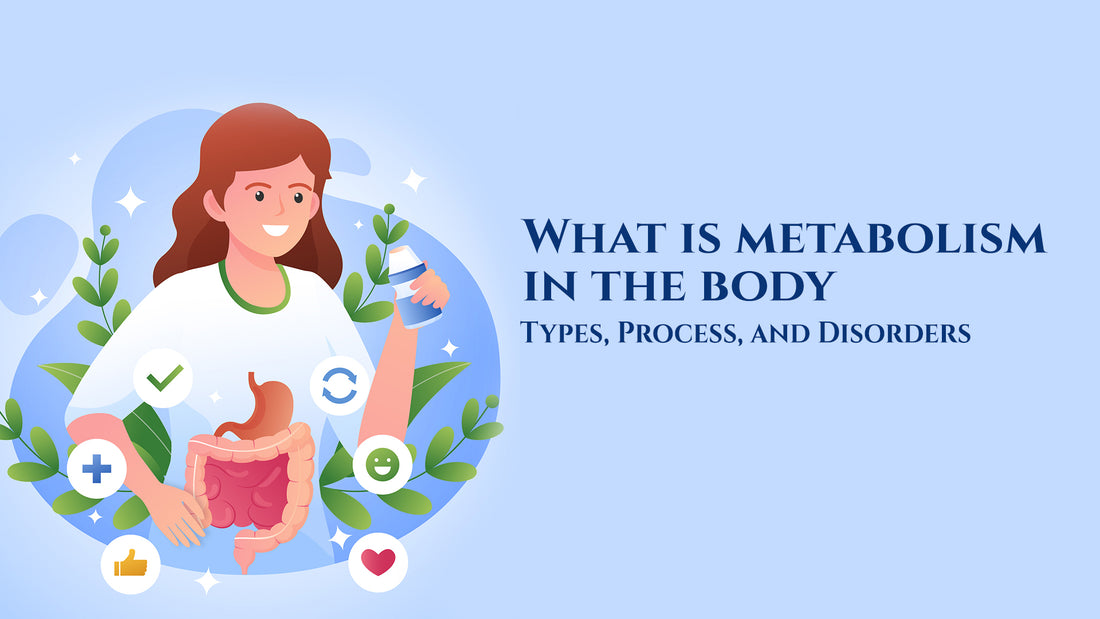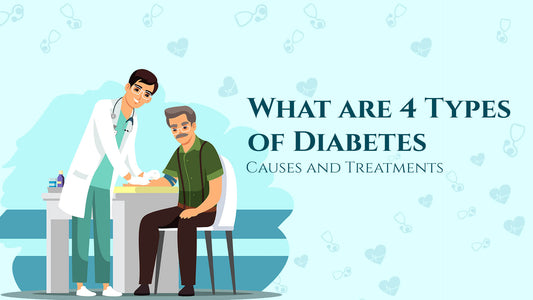Metabolism runs your body's essential functions like breathing and digestion smoothly behind the scenes. Your metabolism delivers energy to your body for optimal function. You get energy from foods and drinks to promote growth, reproduction, development, and other vital functions.
Meanwhile, the metabolism processes depend on health, weight, and nutrition. It can be fast or slow.
If you have a fast metabolism, then you burn more calories while resting; on the flip side, a slow metabolism means delayed calorie burn. We will provide the ins and outs of metabolism, including types, processes, disorders, and ways to boost your metabolism.
Understanding Metabolism
Metabolism refers to the internal chemical processes that manage how your body converts food into energy and uses it. It's a complex process that fuses calories and oxygen to make and release energy. This energy fuels your body's primary functions, such as
- Breathing.
- Blood circulation.
- Digestion
- Growing and repairing cells.
- Regulating body temperature.
- Managing hormone levels.
The metabolic reaction occurs constantly, even when you are resting or sleeping, to maintain your body functions. Basically, metabolic reactions are regulated by hormones and enzymes, such as adrenaline, insulin, and thyroid.
Multiple factors, such as physical activity, age, muscle mass, hormone function, gender, and health conditions such as hypothyroidism and cancer, impact your normal function of metabolism or BMR. BMR is the number of calories your body requires to maintain body function at rest.
When you eat food, your digestive system uses enzymes to convert protein into amino acids, carbs into simple sugar, and fat into fatty acids for energy. Next, these compounds get absorbed into your bloodstream to enter into cells. Then, other enzymes regulate chemical reactions to metabolize these compounds. The energy can be used by the body or stored in muscle, fat, and liver for later.
Types of metabolism
There are three basic types of metabolism:
Endomorph, Ectomorph, and Mesomorph. You might not have heard about these in your daily conversation, but it's essential to know about these types of metabolism to stay healthy. Let's find out more about these types of metabolism.
1. Ectomorphs Metabolism
Ectomorphs have thin bodies with small joints and a fast metabolism, which means they can overeat without gaining many pounds. At the same time, ectomorphs have to take a lot of calories to put on some muscle mass.
Ectomorphs Characteristics
- Slim body
- Flat chest
- Small shoulders
- Fast metabolism
- Hyperactive
- Tough to gain weight
If you fall under this type, you can take adequate protein and include strength training in your routine to gain weight.
2. Endomorphs Metabolism
Individuals with the endomorph metabolic type have heavy arms and legs, a rounded body, and a slow metabolism. It's often problematic for an endomorph to lose some pounds, but we can't say it is impossible.
Endomorph Characteristics
- Round body
- Gain muscle and weight easily
- Slow metabolism
- Strong leg muscles and fragile above-body muscle
- Hard to lose weight
- Tired easily
If you have an endomorph metabolic type, consume less carbs, more protein, and healthy fats. Besides the healthy diet, you can begin cardio and strength training to and can follow experts tips to lose weight.
3. Mesomorph Metabolism
Mesomorphs have athletic and middle-sized bodies—they can easily put on weight. In fact, the Mesomorphs have a slower metabolism than ectomorphy but faster than endomorphs.
Mesomorph Characteristics
- Athletic
- Medium-sized body structure
- Broad shoulders
- Gains muscle easily
- Responds well to exercise
If you fall under this metabolic type and want to lose weight, then cut off your carb intake along with cardio and strength training.
Metabolism Processes
Metabolism includes two distinct processes that work side by side: Anabolism and Catabolism.
- Catabolism: In this process, the food breaks down into simpler forms to get energy for body functions. It releases energy by breaking down large molecules such as carbs and fat. This inflames anabolism and allows the muscle to shorten and the body to move. Meanwhile, the complex breaks down into simple substances with the release of ATP (energy), discharging waste like CO2, phosphorus, and sulfur nitrogen out of the body.
- Anabolism: It is the process of building and storing to promote new cell growth, maintain tissue, and store energy for later use. During this process, small molecules convert into larger complex ones and are stored in our bodies as fat.
Metabolic disorders
A metabolic disorder happens when a chemical reaction disrupts–it impacts how you break down large molecules for energy, produce and regulate energy. It can make your body produce many or few hormones that engage in metabolism. It can be caused by genetics, mitochondria dysfunction, and organ dysfunction. There are more than 1300 metabolic disorders; however, most of the conditions are rare, and some are common, like diabetes. Here are some metabolic disorders;
Diabetes Mellitus
It is one of the common metabolic disorders that affects millions of people in the world. Your body's knack for managing blood sugar levels affects diabetes. In type 2 diabetes, the body cells don't respond well to insulin, which causes insulin resistance and a spike in blood sugar levels. And in type 1 diabetes, the pancreas stops making insulin hormones because the immune system attacks the pancreas cells that produce insulin.
Phenylketonuria
Phenylketonuria is an unusual inherited metabolic disorder that impacts the breakdown of phenylalanine(an amino acid typically found in protein) and causes it to build up in the body. A change in the phenylalanine hydroxylase (PAH) gene causes Phenylketonuria as it produces enzymes that help break down phenylalanine.
Maple Syrup Urine Disease
Maple syrup urine disease (MSUD) is a rare inherited metabolic condition in which a body can't process specific amino acids. It causes the build-up of toxic material in the blood and urine—and can damage the brain and nervous system if left untreated.
Hemochromatosis
Hemochromatosis is a metabolic disease that urges too much iron build-up in the heart, pancreas, skin, joints, pituitary gland, and liver. It's dangerous for the body to get excess iron, which can damage organs and tissues, causing multiple diseases such as liver cancer, Heart problems, Arthritis, and Diabetes.
Urea Cycle Disorders
Urea cycle disorder is a genetic metabolic condition that impacts the function of enzymes and proteins that move waste(ammonia) out of the body. Ammonia is harmful and, over time, causes life-threatening fallout if the body is unable to eliminate it.
Tay-Sachs Disease
Tay-Sachs disease is also a rare genetic disorder transferred from parent to child. The enzyme(hexosaminidase) that helps break down a fatty substance is missing in Tay-Sachs disorder. These fatty substances build up in the brain and spinal cord, which can cause nerve and brain damage.
Tips to have a healthy metabolism
- Don't skip meals; food on time gives you energy, and skipping it can cause poor metabolism. When you don't take calories, your body breaks down muscle to get energy, slowing the metabolic rate.
- Consume vegetables, fruit, lean protein, healthy fats, and carbs to stimulate your metabolism.
- Maintain your weight, do some strength training, and walk to fuel your metabolism.
- Restrict your alcohol and smoke intake as it slows down metabolism.
Conclusion
Metabolism is a set of chemical reactions that turn food into energy, use it, and store an extra in the body. By knowing your metabolic type, you can personalize your workout and diet to fuel your metabolism–and stay healthy in the long run. Metabolic disorders can happen, though they are rare; some are common as well, like diabetes. You can maintain your metabolism by eating healthy and staying physically active.



